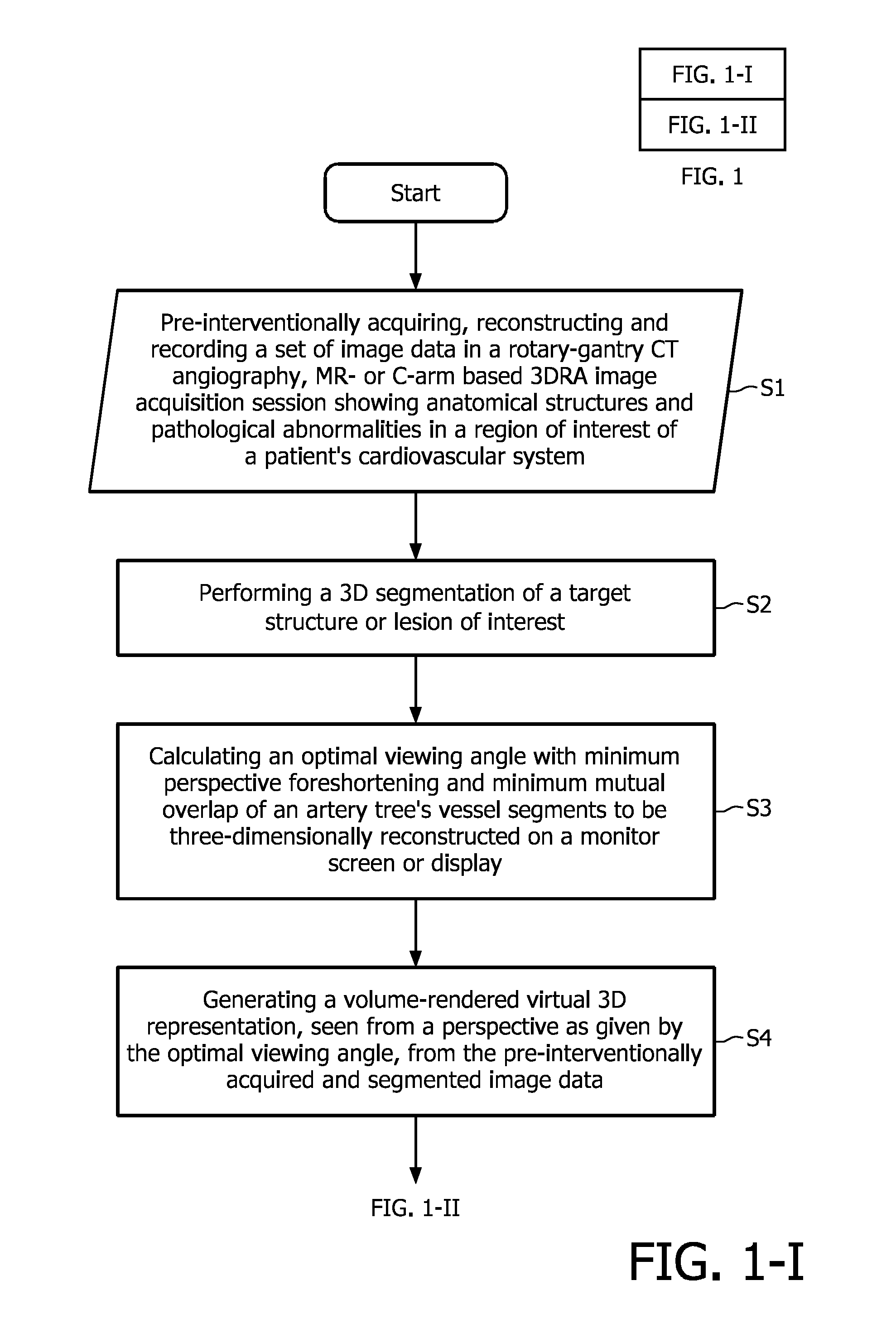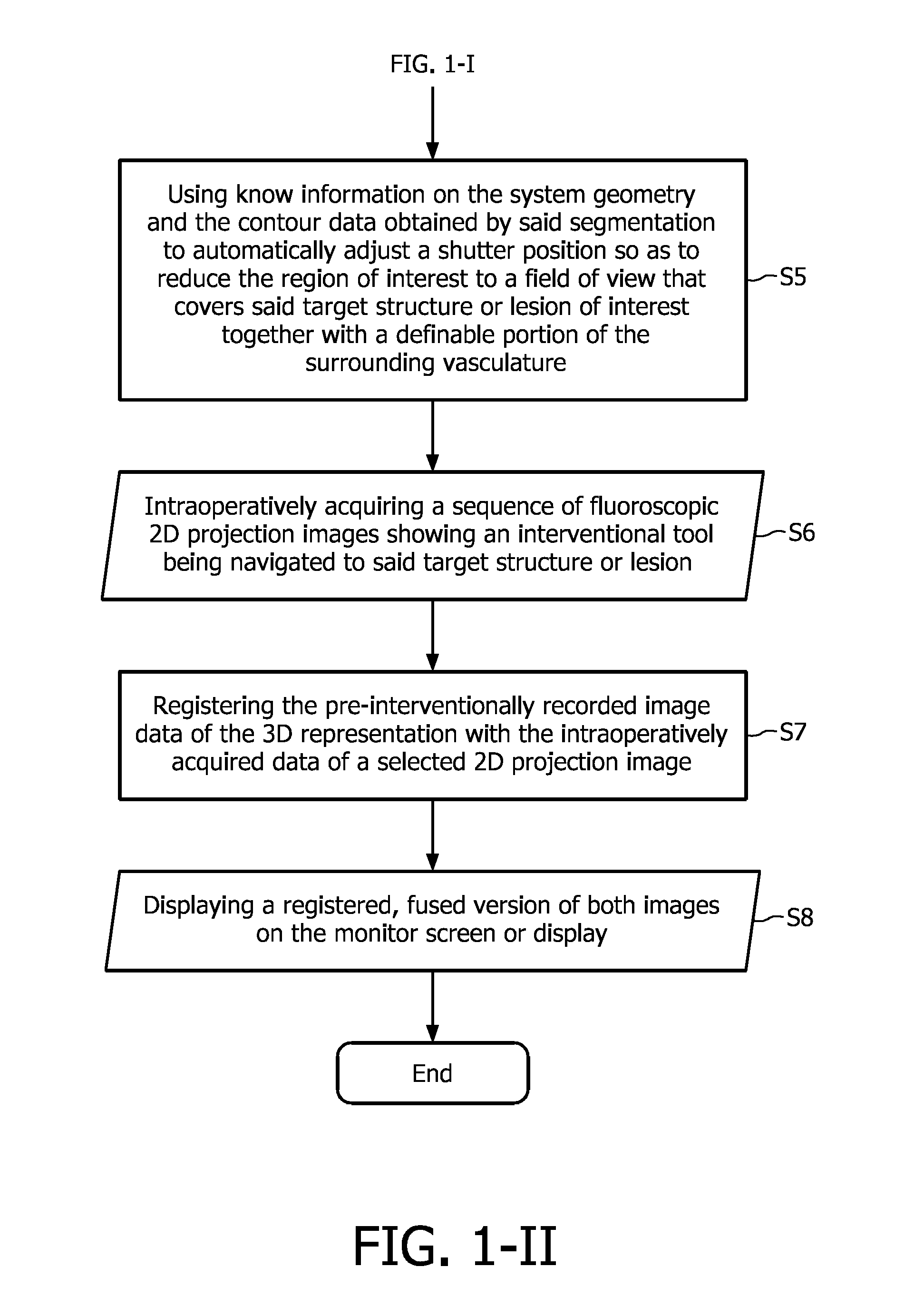Angiographic image acquisition system and method with automatic shutter adaptation for yielding a reduced field of view covering a segmented target structure or lesion for decreasing X-radiation dose in minimally invasive X-ray-guided interventions
an image acquisition system and automatic shutter technology, applied in angiography, angiography, diaphragm/collimeter handling, etc., can solve the problems of reducing affecting the image quality of the obtained image, and the most difficult imaging task in the cardiac catheterization lab is imaging patients at steep viewing angles. achieve the effect of reducing the radiation dos
- Summary
- Abstract
- Description
- Claims
- Application Information
AI Technical Summary
Benefits of technology
Problems solved by technology
Method used
Image
Examples
Embodiment Construction
[0041]In the following, the proposed image acquisition device and method according to the present invention will be explained in more detail with respect to special refinements and referring to the accompanying drawings.
[0042]The flowchart depicted in FIG. 1 illustrates the proposed image acquisition method according to the above-described first exemplary embodiment of the present invention. The proposed method begins with the step of pre-interventionally acquiring, reconstructing and recording (S1) a set of image data in a rotary-gantry based CT angiography imaging, MR- or C-arm based 3DRA image acquisition session, said image data showing anatomical structures and / or pathological abnormalities in a region of interest of a patient's cardiovascular system to be examined and treated by executing a minimally invasive image-guided intervention. These image data are then subjected to a 3D segmentation algorithm (S2) in order to find the contours and, optionally, calculate the size of a ...
PUM
 Login to View More
Login to View More Abstract
Description
Claims
Application Information
 Login to View More
Login to View More - R&D
- Intellectual Property
- Life Sciences
- Materials
- Tech Scout
- Unparalleled Data Quality
- Higher Quality Content
- 60% Fewer Hallucinations
Browse by: Latest US Patents, China's latest patents, Technical Efficacy Thesaurus, Application Domain, Technology Topic, Popular Technical Reports.
© 2025 PatSnap. All rights reserved.Legal|Privacy policy|Modern Slavery Act Transparency Statement|Sitemap|About US| Contact US: help@patsnap.com



